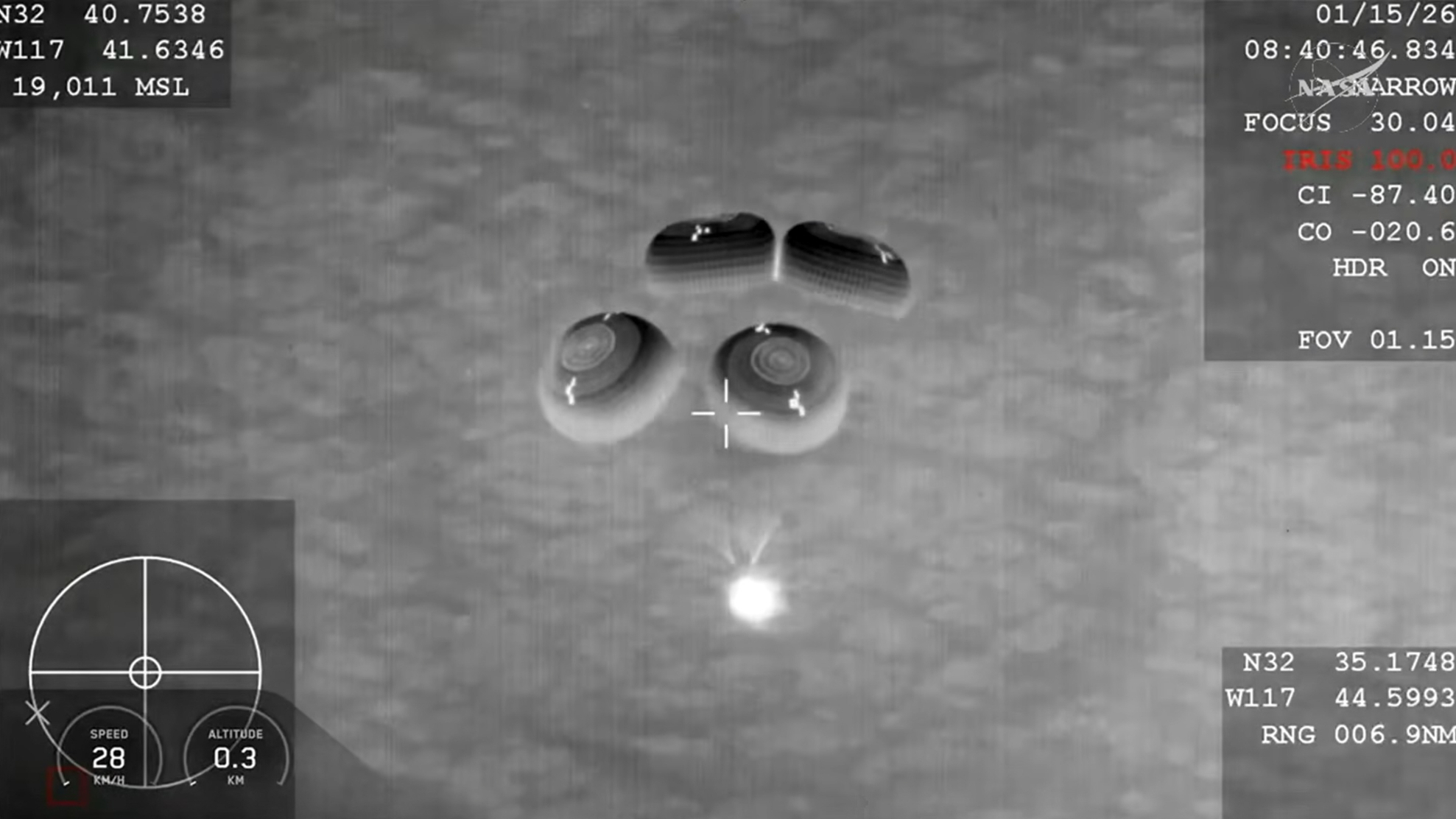Coldest Known Object in Space Is Very Unnatural

The coldestknown object out in space has now been announced by scientists. It's not afrozen comet or even some distant, chilly gas cloud. Rather, it's a spacecraft.
On July 3,the European Space Agency?s Planck spacecraft reached this frigid extreme aspart of a key step in the satellite's mission to observe the remnant radiationof the Big Bang.
Since itslaunch on May 14 (accompanied by its sibling spacecraft Herschel), Planck has been traveling to itsfinal orbit at the second Lagrange point of the sun-Earth system, L2, andcooling its instruments down to their operational temperature of minus 459.49degrees Fahrenheit (minus 273.05 Celsius). This temperature is just 0.1 Celsiusabove absolute zero, the coldest temperature theoretically possible in ouruniverse.
?It isindeed both the coldest spot in any spacecraft that we know about, and also thecoldest known object in space, including dust, gas etc.,? Planck projectscientist Jan Tauber wrote in an email. ?Of course in a laboratory on Earth,colder spots can be made.?
Such lowtemperatures are necessary for Planck?s detectors to study the Cosmic MicrowaveBackground (CMB) ? the first light released by the universe, only 380,000 yearsafter the Big Bang ? by measuring its temperature across the sky.
Over thenext few weeks, mission operators will fine-tune the spacecraft?s instruments.Planck will begin to survey the sky in mid-August.
Planck isequipped with a passive cooling system that brings its temperature down toabout minus 382 F (minus 230 C) by radiating heat into space. Three activecoolers take over from there, and bring the temperature down further to anamazing low of minus 459.49 F (minus 273.05 C).
Breaking space news, the latest updates on rocket launches, skywatching events and more!
The CMB canbe detected in all directions of the sky at an average temperature of 2.73degrees Kelvin (minus 450 degrees Fahrenheit or minus 270 degrees Celsius).Previous space-based missions have found that the temperature of the CMB variesever so slightly in different areas. Planck is built to resolve thesevariations in greater detail.
Planck?sdetectors will look for variations in the temperature of the CMB that are abouta million times smaller than one degree ? this is comparable to measuring fromEarth the heat produced by a rabbit sitting on the Moon.
The photonsin the CMB could also tell astronomers when and how the first stars formed.They could also shed light, so to speak, on how galaxies, galaxy clusters andthe large voids in space came to be.
After acrucial maneuver, Planck also reached the L2 point last week. At the start ofthe maneuver, Planck was located 0.89 million miles (1.43 million km) fromEarth.
?Everyonehere is quite happy to see Planck getting into its operational orbit,"said Chris Watson, Spacecraft Operations Manager.
Planck isslated for a 15-month mission, time enough for two full surveys of the sky.
- Video ? The Herschel and Planck Missions
- New European Telescopes to Peer into Obscure Cosmic Corners
- Bounty of Space Telescopes Fuels Golden Age of Astronomy

Space.com is the premier source of space exploration, innovation and astronomy news, chronicling (and celebrating) humanity's ongoing expansion across the final frontier. Originally founded in 1999, Space.com is, and always has been, the passion of writers and editors who are space fans and also trained journalists. Our current news team consists of Editor-in-Chief Tariq Malik; Editor Hanneke Weitering, Senior Space Writer Mike Wall; Senior Writer Meghan Bartels; Senior Writer Chelsea Gohd, Senior Writer Tereza Pultarova and Staff Writer Alexander Cox, focusing on e-commerce. Senior Producer Steve Spaleta oversees our space videos, with Diana Whitcroft as our Social Media Editor.
